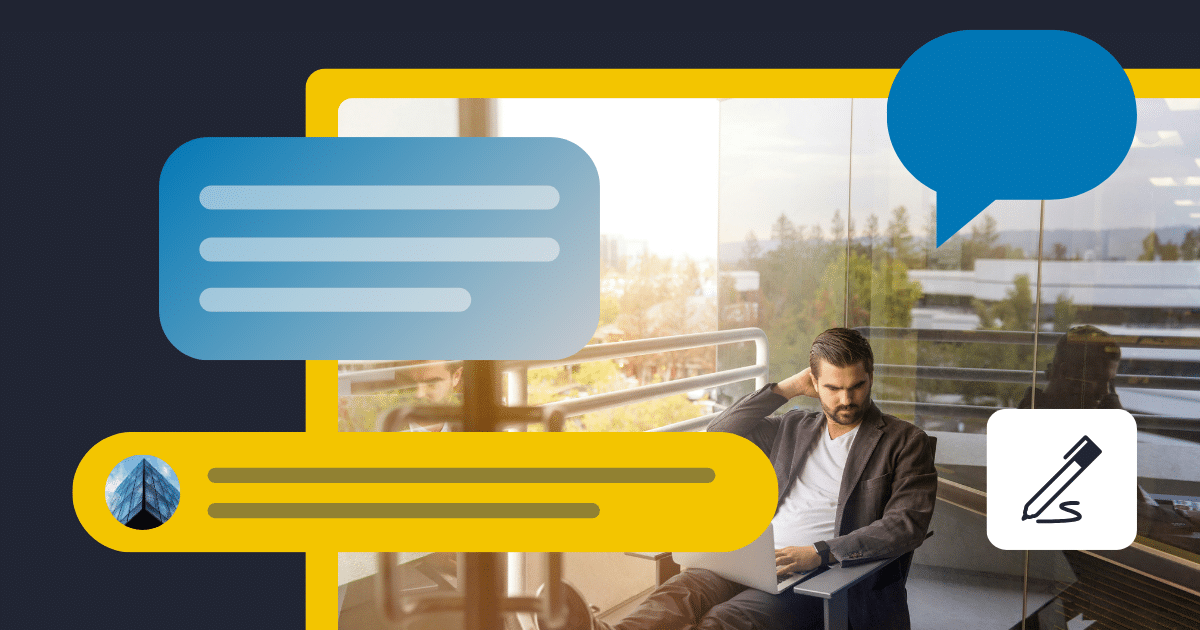10 examples of great LinkedIn posts from brands
What better way to create compelling LinkedIn posts than having a great example at hand?
To make things easier, here’s a quick list of posts from other brands. Use these as inspiration for your own content and to create the perfect LinkedIn post.
Here are 10 creative LinkedIn posts examples from brands:
- Share company news and milestones
- Spotlight your employees
- Share customer success stories
- Post valuable industry insights
- Promote webinars and events
- Launch new products
- Showcase your company’s culture
- Establish thought leadership
- Engage your audience with polls, quizzes, and questions
- Share templates and downloadable resources (lead magnets)
1. Share company news and milestones
Sharing company news and milestones is an easy LinkedIn post idea that helps build credibility and keeps your audience updated on your progress.
Here’s a LinkedIn post example of a company update from Adyen:
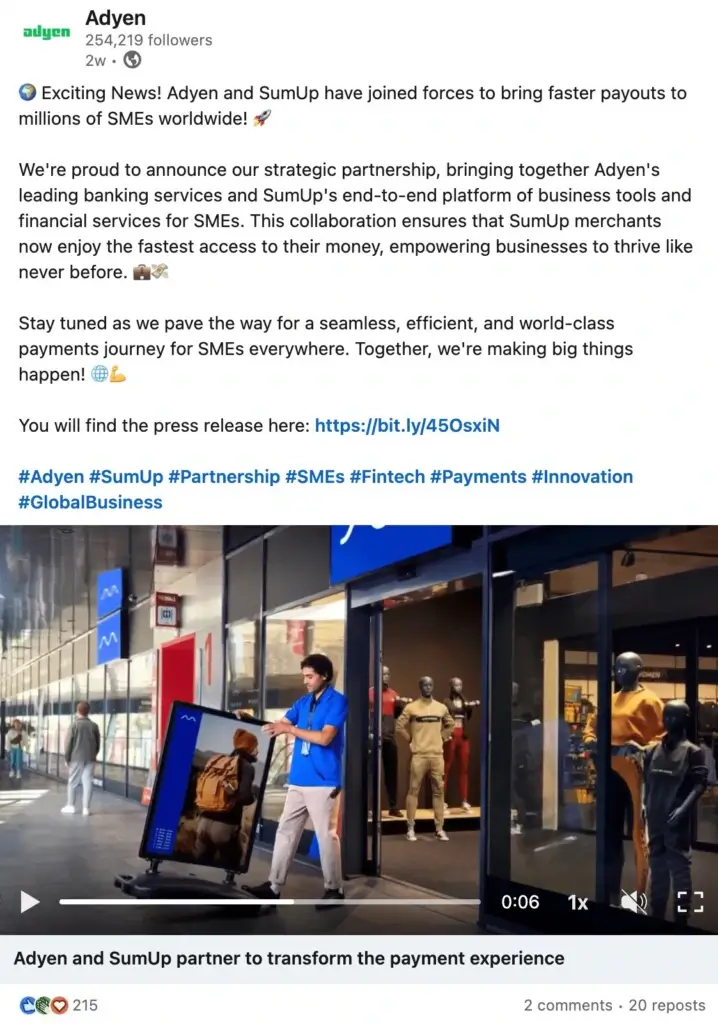
Whether it’s reaching a significant revenue milestone, opening a new office, a sneak peek into a product or service update, or announcing a new partnership, these posts highlight your company’s growth and achievements.
For example, when celebrating your company’s anniversary, you can create a post expressing gratitude to your team and clients, highlighting their contributions to your success. Enhance the post with visuals to make it more engaging. You can use multi-image posts or short-form video content for the best results.
Pair your visuals with a compelling headline to instantly capture viewers’ attention and improve your social media strategy.
2. Spotlight your employees
Highlighting your employees on LinkedIn humanizes your brand and showcases the talent behind your success. Share stories about a personal anecdote or professional achievement, work anniversaries, and their unique contributions to your company.
Whether LinkedIn members are interested in a job opening or they just want to learn more about the brand, these posts will offer the perfect look into your company culture and values. Tagging other users or colleagues in the post helps extend your reach and visibility.
Here’s a LinkedIn post example of an employee spotlight from Miro:
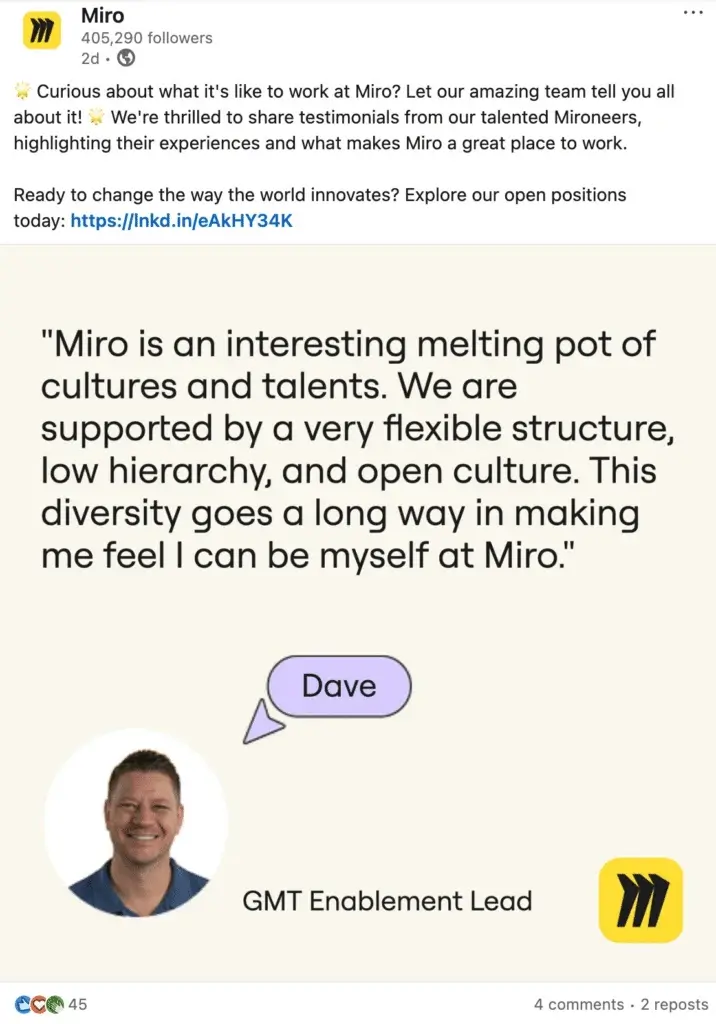

You can create a post introducing a new team member beyond their job title, detailing their background, role, and what excites them about joining your company. Including a professional photo or a short video interview can make the post more personal and engaging.
3. Share customer success stories
Customer success stories demonstrate the value of your products or services and build trust with your audience. Share detailed case studies or customer testimonials, highlighting how your solutions have helped them achieve their personal or professional goals.
For instance, you can create a post featuring a client’s journey from facing a particular challenge to achieving success with your product. Include specific metrics or quotes from the client to add authenticity and impact to the story, and even humanize it with a “lesson learned” angle in their own words.
Here’s such a client success story from Invisors:
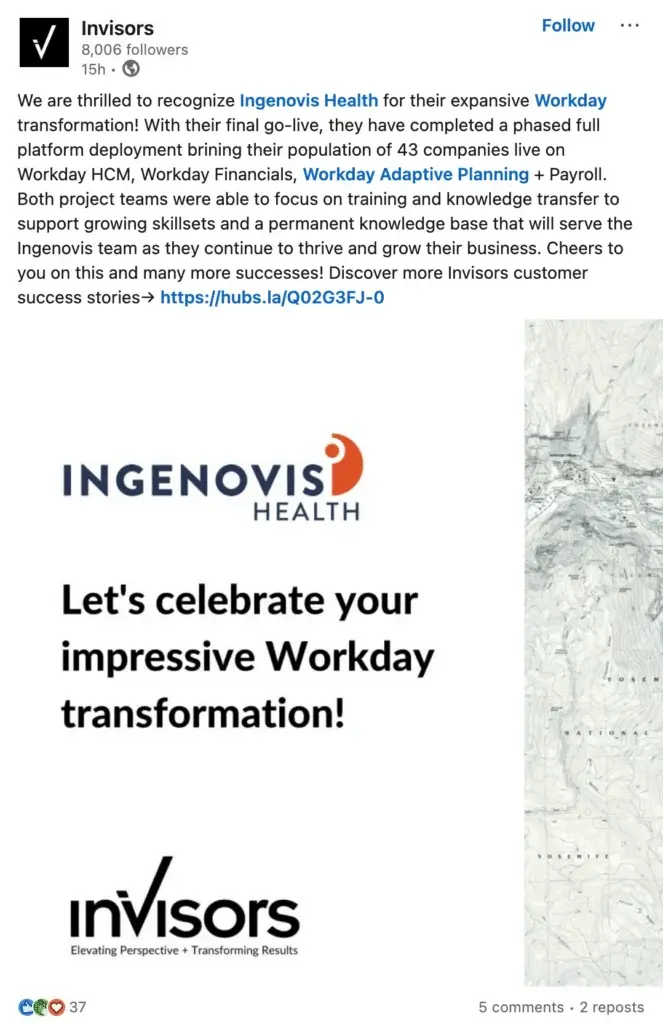

This way, potential clients can be up to date with your work and your client portfolio. To make the content easier to read and digest, use bullet points and single-sentence paragraphs in your LinkedIn text posts.
Don’t overlook text-only posts, as they often encourage deeper reading and feel more personal in the feed. Don’t forget to use line breaks generously and write short paragraphs, as readability is a must, especially on mobile.
4. Post valuable industry insights
Providing valuable industry insights positions your brand as a thought leader and a go-to resource for information.
Here’s an industry insight post from Deloitte:
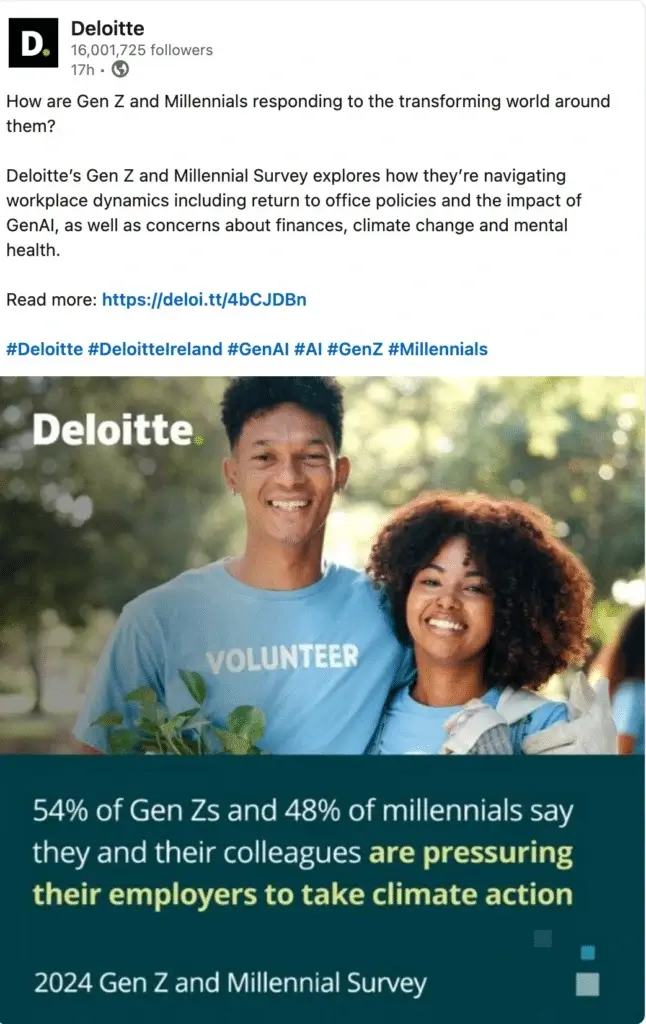

Share relevant articles, research findings, or trends that are relevant to your audience. For example, write a post summarizing the key takeaways from a recent industry report, adding your own analysis and predictions. You can also link to a recent LinkedIn newsletter or summarize a great post from your feed that’s content-related and timely.
Use infographics or charts to visualize the data and create engaging content that is easier to digest.
5. Promote webinars and events
Promoting webinars and events on LinkedIn can drive registrations and increase participation. Create posts that outline the key benefits of attending, featuring prominent speakers or exclusive content.
Here’s how InnovareAI has promoted their webinar:
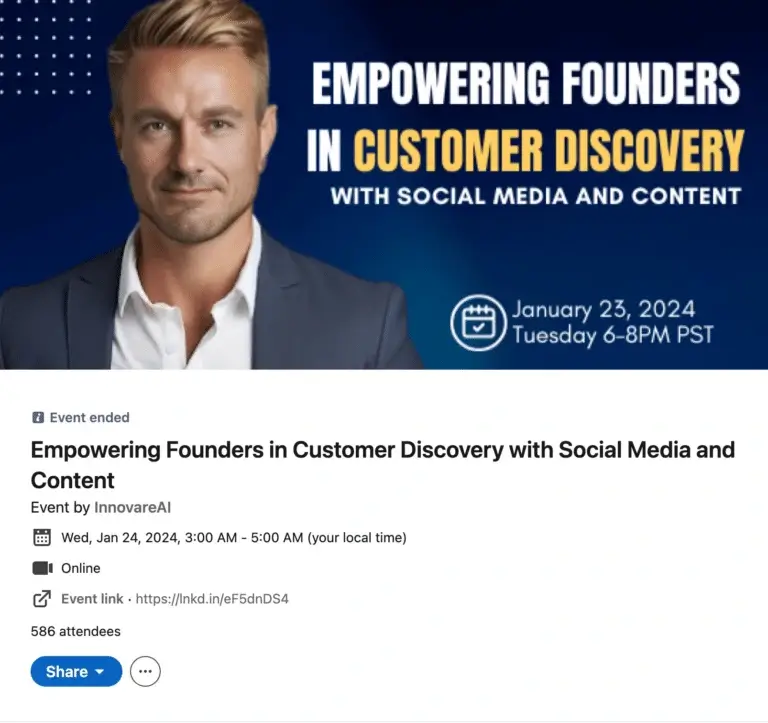

Let’s say you’re hosting a webinar on a new industry trend. You’d want to highlight the topics covered, introduce the expert speakers, and outline what attendees will learn. Be sure to include a registration link and use a compelling image or video teaser to grab attention.
6. Launch new products
Announcing new product launches on LinkedIn can generate excitement and drive interest. Create a detailed post explaining the features and benefits of the new product and how it addresses your audience’s needs.
Take a look at how Lime announced its new scooter:
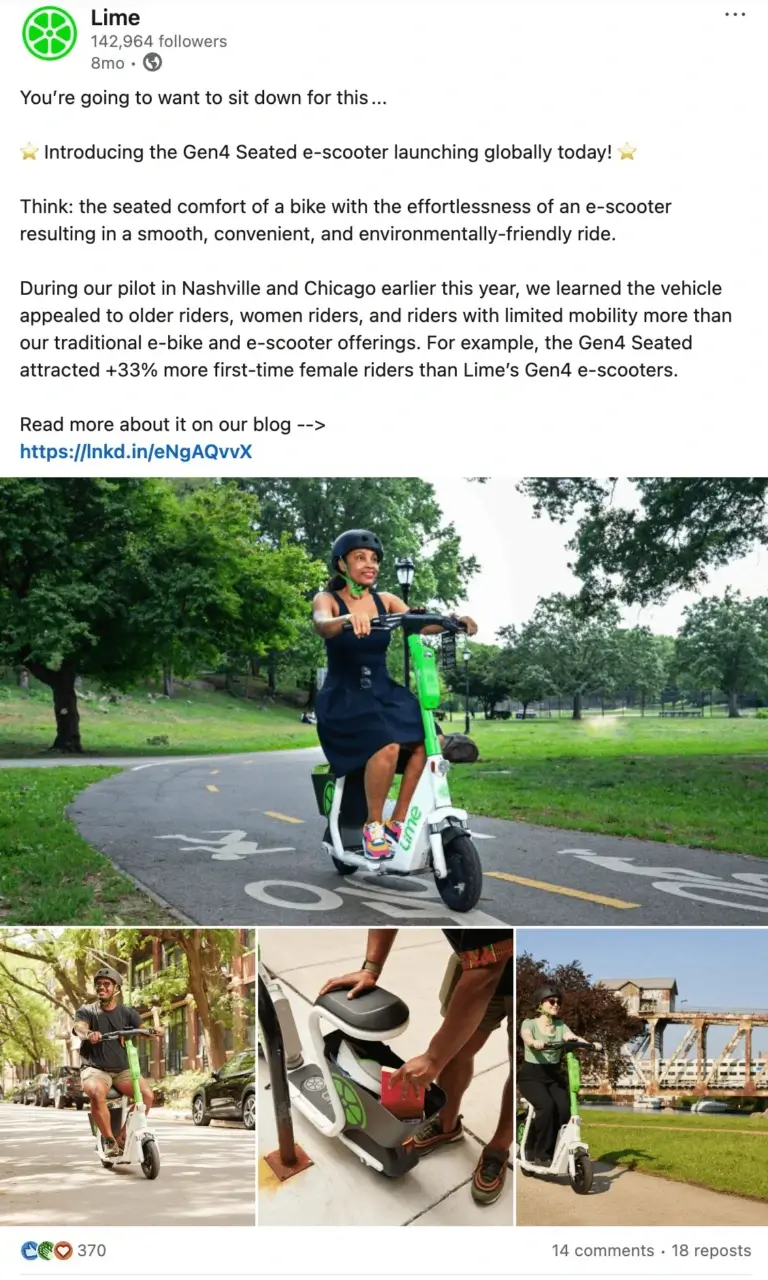

You can also encourage your followers to ask questions or share their thoughts to encourage engagement, spark conversations, and build professional relationships in your LinkedIn feed.
7. Showcase your company’s culture
Showcasing your company’s culture on LinkedIn helps attract talent and engage your audience. Share posts about team-building activities, company values, or behind-the-scenes glimpses at your office.
For example, Women in Tech is a conference organized by Glovo on a regular basis:
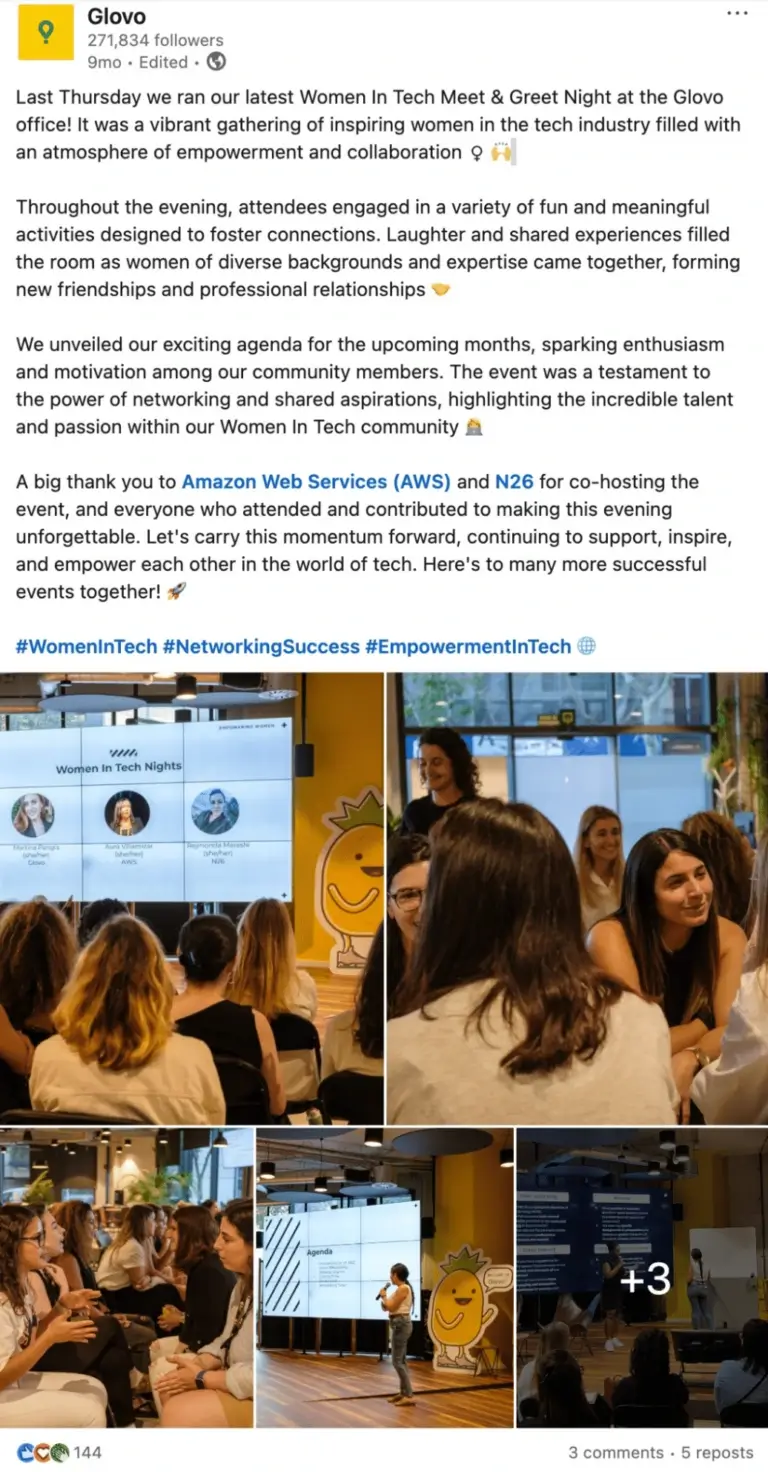

This is valuable content because the event is showing the company’s commitment to empowering females in the industry.
8. Establish thought leadership
Establishing thought leadership involves helping your audience gain valuable insights and opinions on industry topics to position your personal brand as an expert. To achieve this, write long form content like LinkedIn articles, text posts, or how-to guides that provide in-depth analysis or unique perspectives on relevant issues.
Here’s an example of a thought leadership post from Digital Olympus:
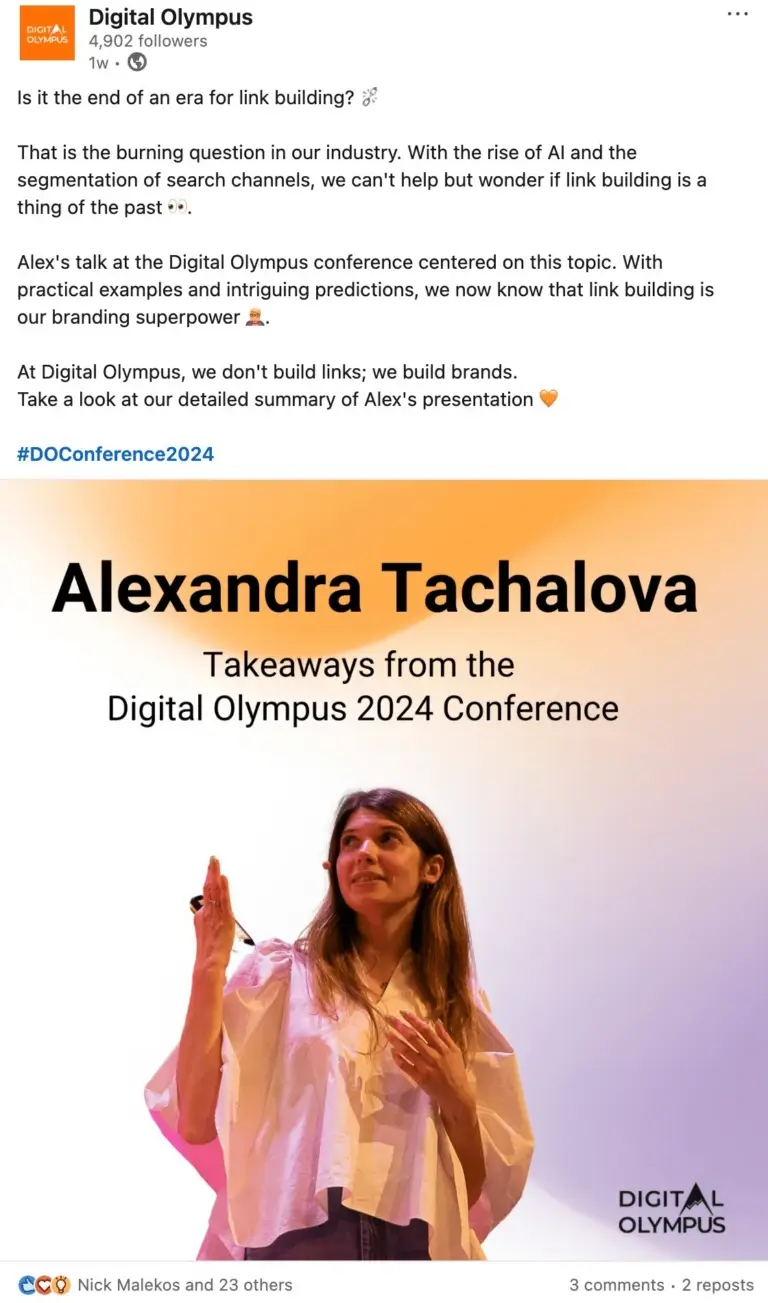

You can create a post discussing the future of your industry, backed by research and personal experience. For example, you can share your predictions and invite a broader audience to engage in a discussion by asking a thought-provoking question that sparks interesting conversations.
Even one post with a strong insight can establish you as someone worth following. Focus on sharing professional posts that offer clear takeaways.
9. Engage your audience with polls, quizzes, and questions
Engaging users with interactive content like polls, quizzes, and audience questions can boost engagement and offer actionable insights. You can either use audience polls to better understand the market, or how they think about your business or industry.
Here’s such a poll posted by Uber:
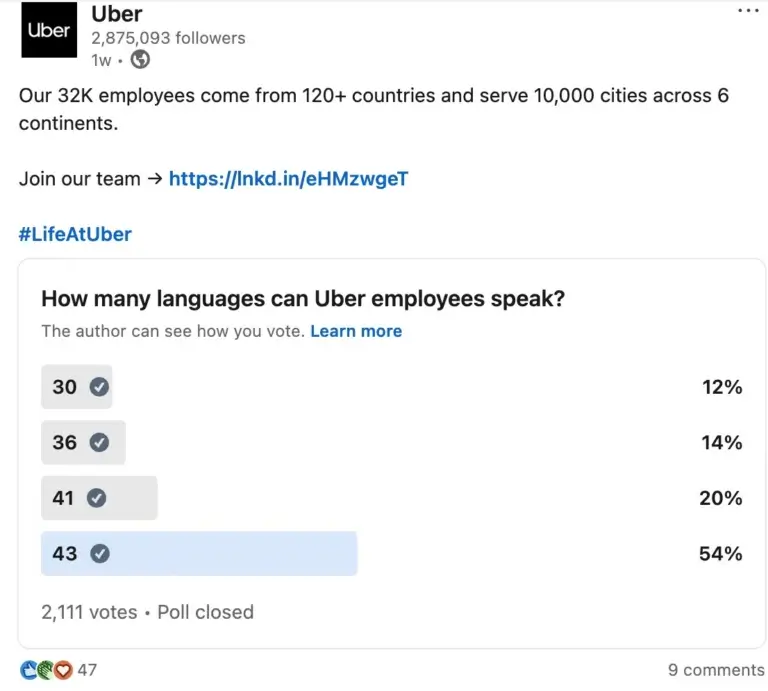

You can create posts that encourage your followers to share their opinions or experiences in their own post. If you want to better interact with your LinkedIn audience as a career coach, for example, post a poll asking about the biggest challenges they face in your industry, and follow up with content addressing those obstacles.
This approach not only encourages further engagement beyond a single post but also helps you understand your followers better. Use the same hashtags for these posts to ensure consistency. Popular hashtags can also increase visibility.
10. Share templates and downloadable resources (lead magnets)
Essentially, a lead magnet, like an eBook, webinar, or checklist, is offered for free in exchange for an email address.
You can create a LinkedIn post with a compelling description of the lead magnet and include a link to a landing page where followers can submit their email to receive the resource. This strategy not only helps collect contact details but also engages your target audience by delivering useful content directly to them.
Here’s an example of a downloadable resource from Omni Lab:
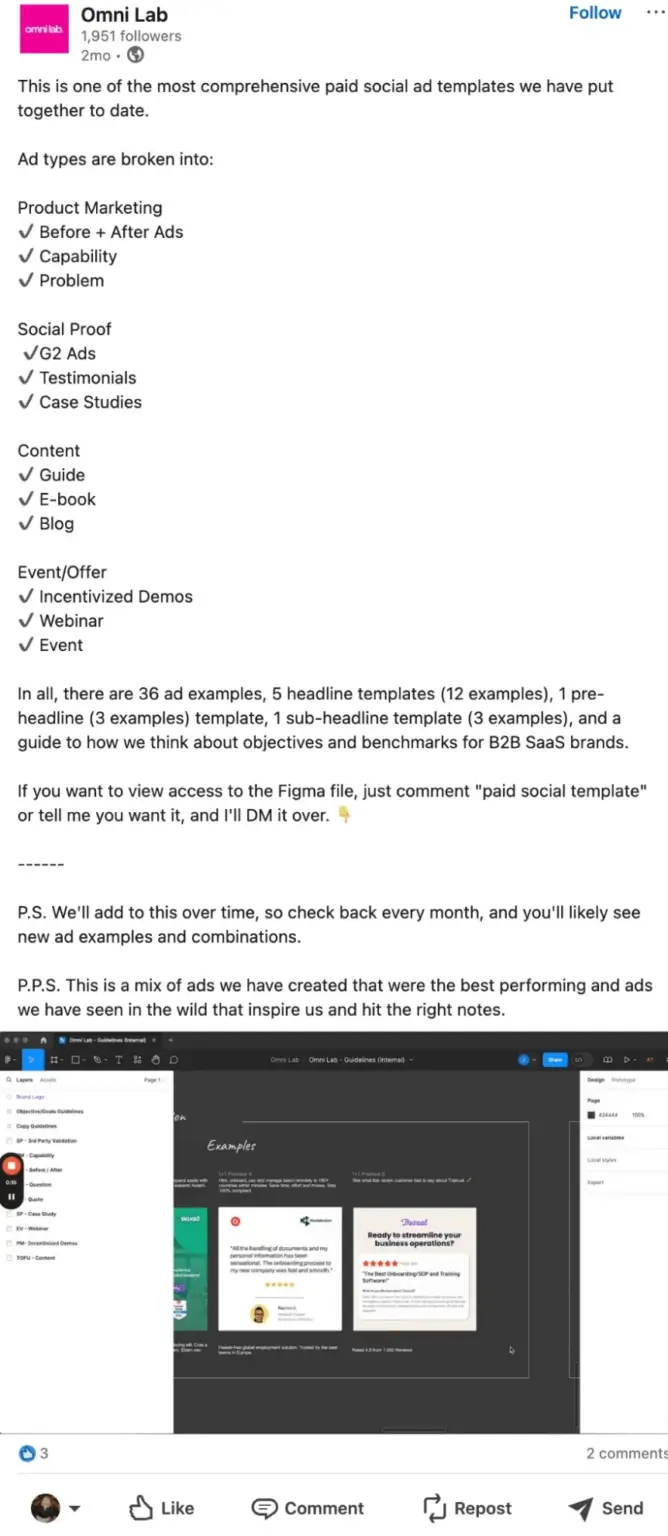

As seen above, this post provides a clear call-to-action by asking users to be active in the comments section for access to the Figma file. This interactive approach engages the audience and simplifies the process of obtaining the resource, highlighting its practical value.

